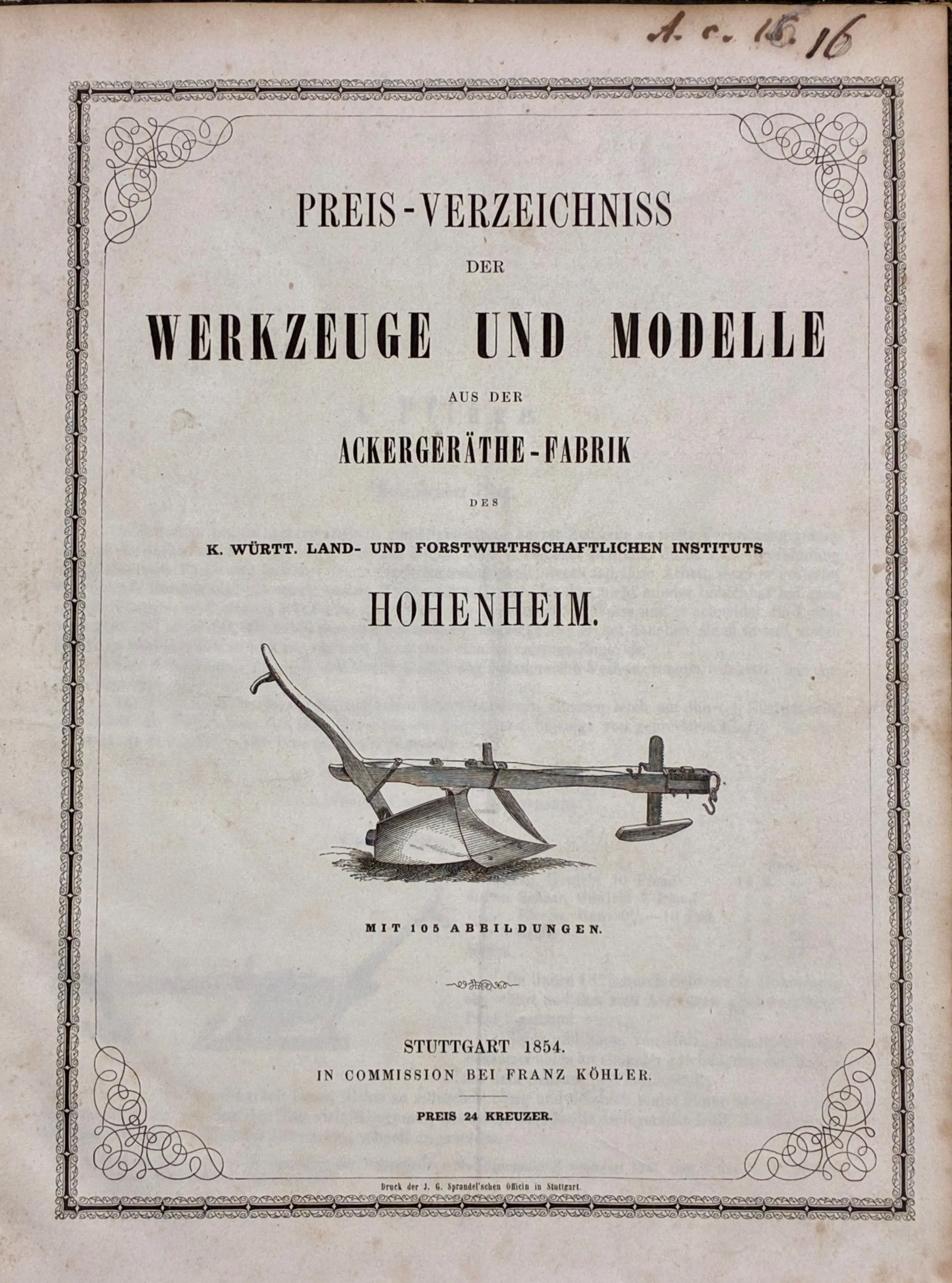13.11.2025
Technology for the Earth – from Around the World
Agricultural engineering was international more than 175 years ago – as shown by a rare sales catalog from that time, which is preserved in Münster-Hiltrup
Hannover is currently the international showcase for modern agricultural technology: The 'Agritechnica' is regarded as the 'world's leading trade fair' for manufacturers and dealers, for farmers, contractors, and industry experts from around the world.
Technology for the domestic field and international orientation – this was not a contradiction even in the 19th century, as shown by a look into an agricultural machinery catalog from 1854, which is preserved in the 'Westphalian Agricultural Library' of the LV Foundation in Münster-Hiltrup.
The Forge Next to the Academy
The catalog is a special rarity. It originates from one of Germany's oldest agricultural machinery companies: from the 'Ackergeräthe-Fabrik' in Hohenheim near Stuttgart. In 1818, the Württemberg King Wilhelm I initiated an Agricultural Academy there. A year later, as an ‘out-creation’ of the academy, the mentioned company was established nearby.
For almost a century, the 'Ackergeräthe-Fabrik' supplied Germany's agriculture with machines manufactured in Hohenheim according to original plans from around the world. A look into the 1854 catalog reveals it: 'English hand butter machines' and 'Scottish threshing machines' were offered at the time, as well as 'New Yorker plows,' 'American corn shellers,' 'Piedmontese silk reels,' or even a 'cheese press in the Swiss style.' A particular highlight was an early horse-drawn grain mower with movable cutter bars, also invented in the USA. No one else built this in Germany.
All these and many other devices are depicted and described in the 'Price List of Tools and Models from the Agricultural Equipment Factory of the Royal Württemberg Agricultural and Forestry Institute Hohenheim' – the full title of the 1854 catalog. On 32 large-format pages and with detailed copperplate engravings, the machines are presented.
For decades, the Hohenheim factory shaped agricultural technology in Germany. From the 1870s, aspiring smithies competed with it. The many private 'start-ups' that emerged everywhere in the countryside were superior to the factory. Its close connection to the academy became its downfall, as described at the time. Added to this were a lack of willingness to innovate and deficiencies in commercial management.
In 1904, the former pioneering company closed its doors. Its early equipment can now be viewed at the German Agricultural Museum in Stuttgart-Hohenheim. The delivery catalogs, of which a special showpiece is preserved in Münster-Hiltrup, continue to testify.
Information About the Library
The 'Westphalian Agricultural Library' (WBL) in Münster-Hiltrup comprises around 6500 volumes of practice-oriented agricultural literature from five centuries. A regional focus is on titles from Westphalia-Lippe and northwestern Germany. The collection is owned by the Agricultural Publishing Foundation in Münster and is arranged as a reference library. Those interested in agricultural history can search the holdings digitally (WBL Holdings) and use the books on-site by prior arrangement.


